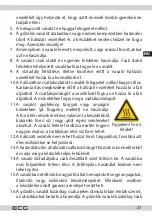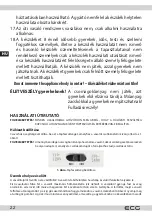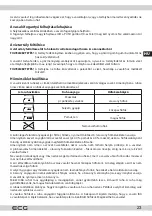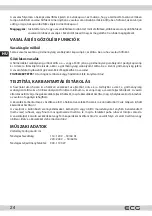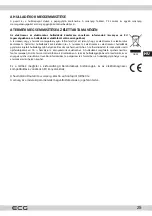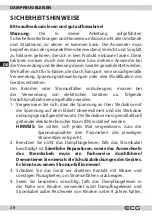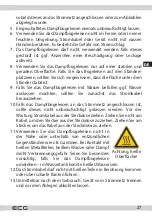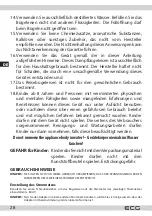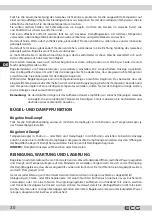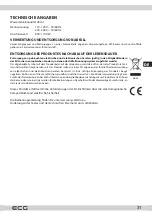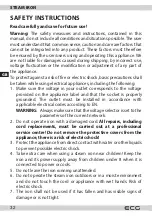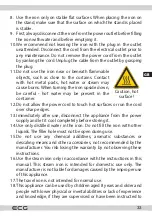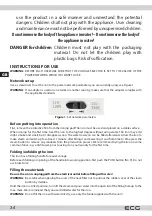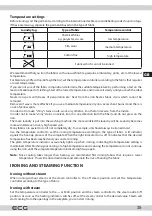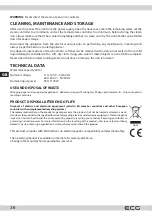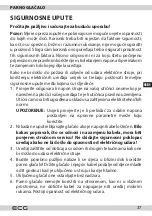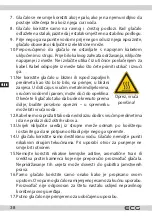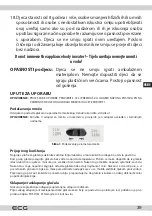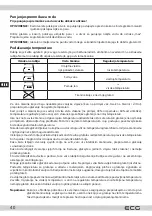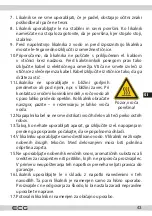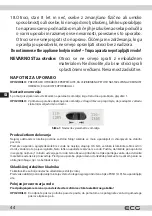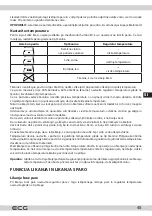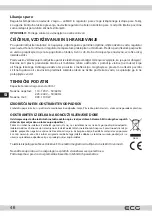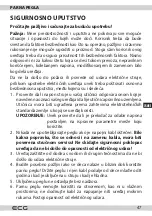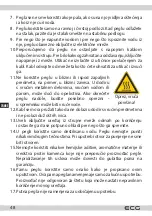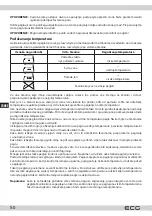
GB
35
Temperature settings
Before ironing, sort the garments according to the international textile care and labelling codes found on tags.
If these are missing, separate the garments based on the type of fabric.
Laundry tag
Type of fabric
Temperature control
Chemical fibres
e.g. polyester, viscose
•
low temperature
Silk, wool
••
medium temperature
Cotton, flax
•••
high temperature
Fabrics which can not be ironed
We recommend that you iron the fabrics with unusual finish (eg sequins, embroidery, prints, etc.) at the lowest
temperature.
For blends (eg. 40% cotton, 60% synthetics), set the temperature controller according to the fabric that requires
a lower temperature.
If you are not sure of the fabric composition, determine the suitable temperature by performing a test on the
least noticeable part of clothing. Start at the lowest temperature and increase it slowly until you reach the ideal
temperature.
Never iron spots with traces of perspiration etc.: heat from the iron fixates fabric stains which cannot be
removed.
Removal of wax is more effective if you use a medium-temperature dry iron: excess heat burns it and there is
a risk of yellow spots.
In order not to make "shiny" stains on silk, wool, or synthetics, iron them in reverse, from the inside.
In order not to make "shiny" stains on velvet, iron it in one direction (with the fiber) and do not press on the
iron.
The more laundry is put into the washing machine, the more wrinkled the laundry will be. Laundry becomes
more wrinkled even in very high speed spin.
Many fabrics are easier to iron if not completely dry. For example, silk should always be ironed moist.
Use the temperature control to set the ironing temperature according to the type of fabric. A lit indicator
signals the heat-up process of the soleplate. When the light indicator turns off it indicates that the desired
temperature has been reached and you can start ironing.
The plate temperature indicator occasionally lights up when ironing, indicating the temperature setting is
maintained. After finishing your ironing at a high temperature and reducing the temperature, do not continue
using the iron until the soleplate temperature indicator lights up again.
Note: Since cooling takes longer than heating, we recommend first ironing fabrics that require a lower
temperature. This will reduce downtimes and eliminate the risk of burning the fabric.
IRONING AND STEAMING FUNCTION
Ironing without steam
When ironing without steam set the steam controller to the off steam position and set the temperature
controller according to the type of fabric.
Ironing with steam
Set the temperature controller to the ••• or MAX position and the steam controller to the steam outlet off
position. As soon as the heating indicator switches off, set the steam control to the desired value. Steam will
start coming from the openings in the soleplate, you can start ironing.
Summary of Contents for NZ 210 Travel
Page 67: ......

